Journey to the Solar System's Third Zone
By S. Alan Stern
When New Horizons reaches Pluto in July, it will close one era of space exploration and open an exciting new one.
When New Horizons reaches Pluto in July, it will close one era of space exploration and open an exciting new one.

DOI: 10.1511/2015.112.42
This July, NASA’s New Horizons spacecraft will complete a 9-year, 5-billion-kilometer journey from Earth to the frontier of the Solar System, where it will undertake the first close study of Pluto and its astonishingly diverse system of satellites. It will be a raw act of exploration unparalleled since NASA’s Voyager missions to the giant planets in the late 1980s. Nothing quite like it has occurred in decades, and nothing like it is set to happen again in our lifetimes.
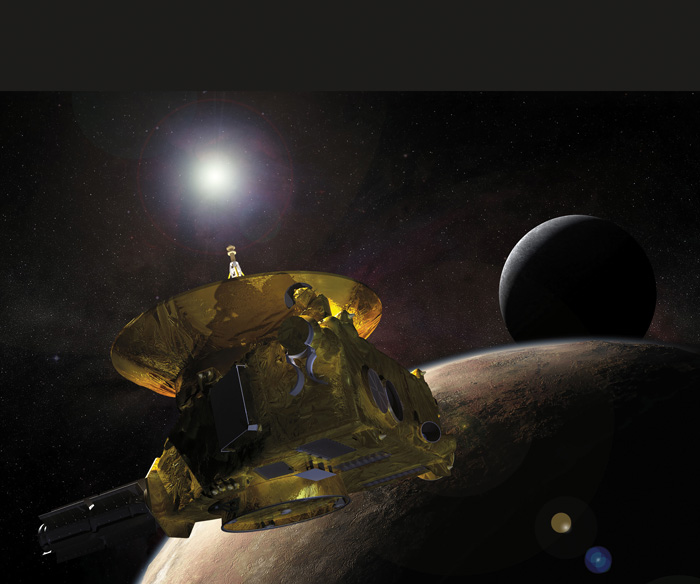
NASA/Johns Hopkins University Applied Physics Laboratory/Southwest Research Institute/Steve Gribben
When most of us were taught basic astronomy in grade school, we learned that the Solar System consists of 4 inner rocky planets (the “terrestrials”), four outer giant, gaseous planets (“the Jovians”), and one small misfit: Pluto. But that was old-school science, limited by mid-20th century technologies that prevented us from seeing the cosmos as it truly is.
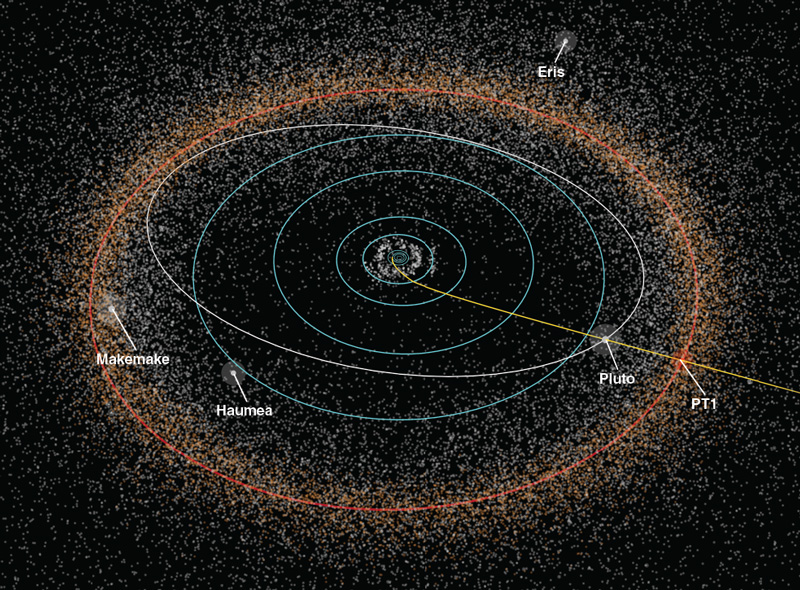
NASA/Johns Hopkins University Applied Physics Laboratory/Southwest Research Institute/Alex Parker
Beginning in the 1990s, planetary scientists—by then armed with large telescopes, high-sensitivity digital cameras, and fast computers—discovered that Pluto is no misfit at all. It is simply the brightest member of a vast population of objects orbiting beyond the Jovians: an entire third zone of the solar system. This region, first hypothesized in the 1940s by Gerard Kuiper, is now called the Kuiper Belt. It is littered with a diverse array of comets and small planets, of widely varying sizes. Pluto is both the largest (2,350 kilometers wide) of them and the first discovered, decades before the rest. The Kuiper Belt is, in turn, by far the largest zone of our planetary system.
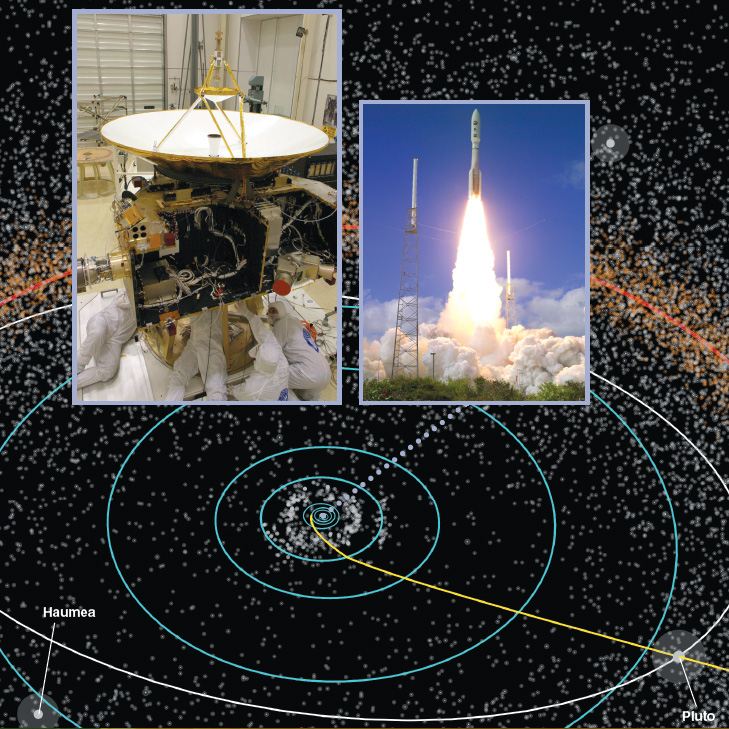
(left) NASA/Johns Hopkins University Applied Physics Laboratory/Southwest Research Institute (NASA/JHUAPL/SwRI)(right) NASA
New Horizons has flown for more than nine years to reach this distant shore. In the months around its closest approach on July 14 of this year, the probe will conduct a detailed survey of Pluto, its array of moons, and its surroundings. In doing so it will also perform the first exploration of the Kuiper Belt—the opening of an entirely new astronomical frontier.
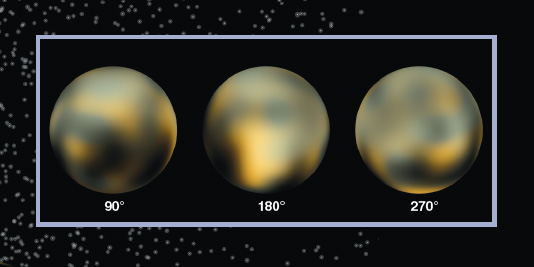
NASA, ESA, and M. Buie/Southwest Research Institute
Right now we know ridiculously little about Pluto. We know it has an atmosphere consisting largely of nitrogen, like our Earth’s though drastically less dense. It has an ultra-cold crust covered with ices of nitrogen, carbon monoxide, and methane. It has at least five moons, polar caps, and an interior that is primarily composed—surprisingly—of rock. Most important, we know that Pluto is the archetype for an entire class of planets that have never been explored. Beyond that, it is a mystery, a virgin world. Who knows what discoveries await?
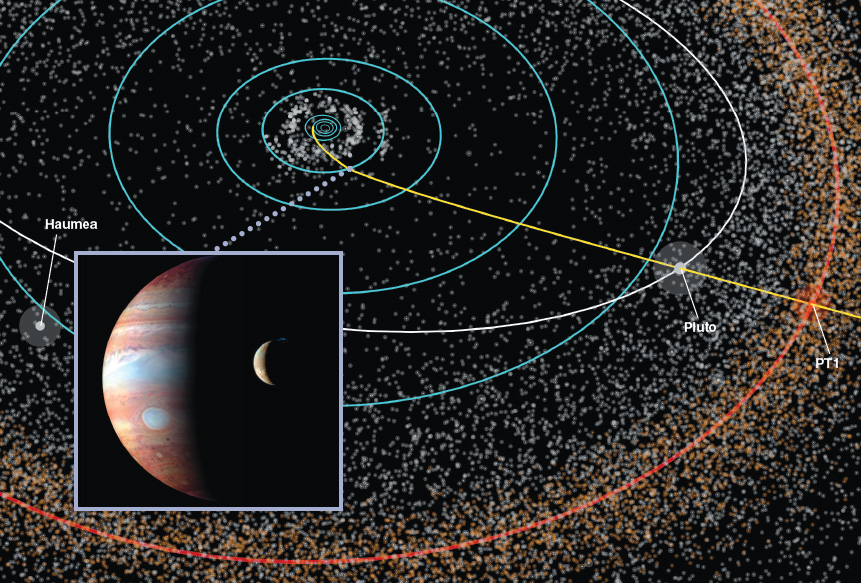
NASA/Johns Hopkins University Applied Physics Laboratory/Southwest Research Institute/Goddard Space Flight Center
The great lesson of planetary exploration—from the 1960s flybys of Mars and Venus to the initial explorations of Mercury and Jupiter, Saturn, Uranus, and Neptune—is to expect the unexpected. No one expected dry riverbeds on Mars. No one expected Mercury to be an exposed planetary core with its mantle stripped away, or to find volcanoes and geysers on the moons of giant planets. No one expected oceans inside Jupiter’s moon Europa, or ice in the clouds of Venus. All of these surprising truths emerged from the early reconnaissance missions.
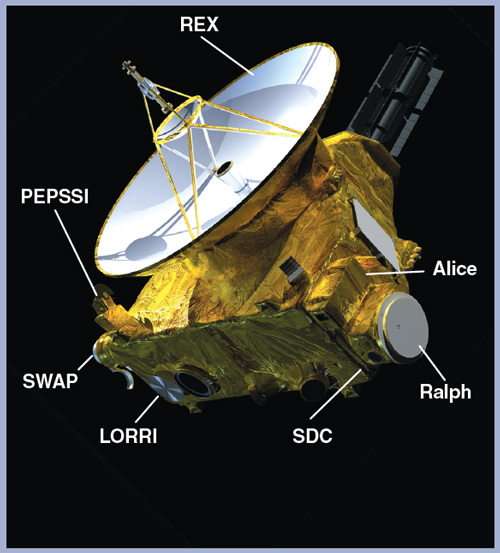
NASA/Johns Hopkins University Applied Physics Laboratory/Southwest Research Institute/Steve Gribben
As my team and I prepare for New Horizons’s encounter with Pluto, we are preparing to be surprised yet again by the richness of nature and the grandeur of seeing a new, faraway planet for the first time. New Horizons is a small spacecraft. It is dwarfed by Voyager 1 and 2 that preceded it to open up the exploration of giant worlds, and it costs barely one fifth as much as the Voyager project. Nevertheless, it carries much more powerful scientific instruments. By analogy with the computing revolution we’ve witnessed since the 1970s when the Voyagers were built, New Horizons is like a tablet computer compared to Voyager’s mainframe, packing much greater capability into a much smaller volume, and at a much lower price.
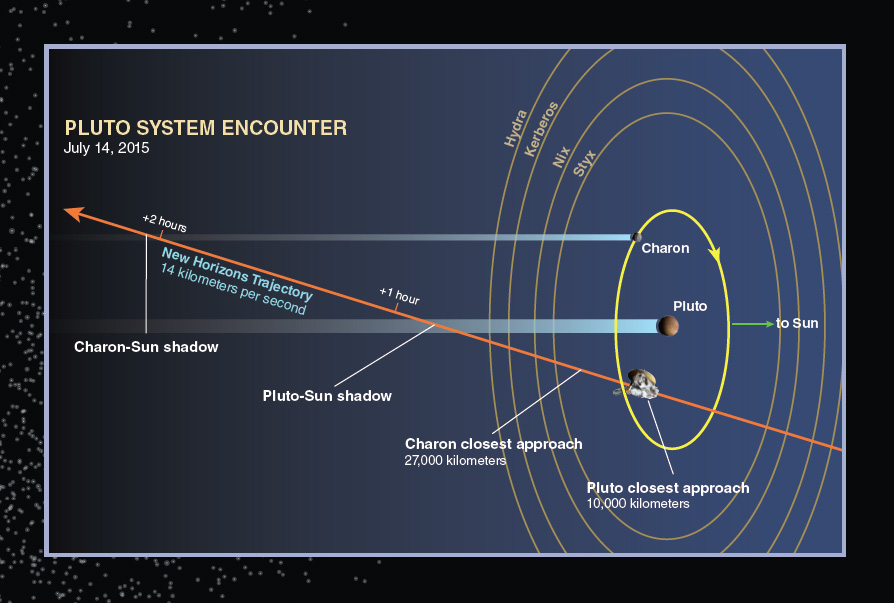
Illustration by Barbara Aulicino, adapted from http://pluto.jhuapl.edu/mission/images/pluto_encounter3_tn.jpg
Beginning in May, New Horizons will deliver higher-resolution images of Pluto and its satellites than are possible from any telescope on Earth—even the Hubble Space Telescope. For 10 weeks before and after the day of encounter, it will “own” the system. At closest approach New Horizons will sample Pluto’s atmosphere, search for new moons, look for possible rings, map the composition and temperature distribution across all the bodies in the Pluto system, and take images so good that if it were making an equivalent pass over New York City it could spot wharfs on the Hudson River.
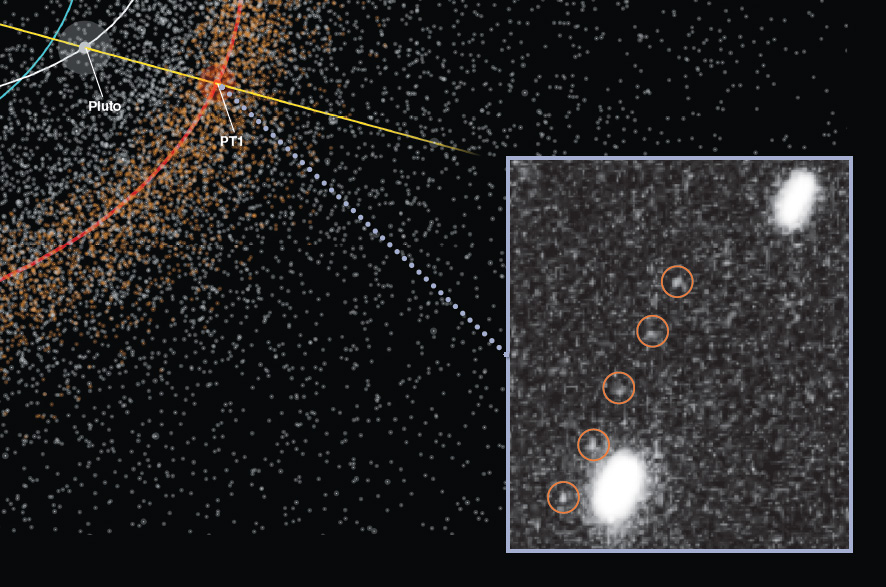
NASA, ESA, SwRI, JHU/APL, and the New Horizons KBO Search Team
I have worked for 25 years to make the New Horizons mission happen, because the scientific promise is so great. The exploration of Pluto will mark both the opening of the exploration of the Solar System’s third zone and the historic closing of the initial reconnaissance of our planetary system as a whole.
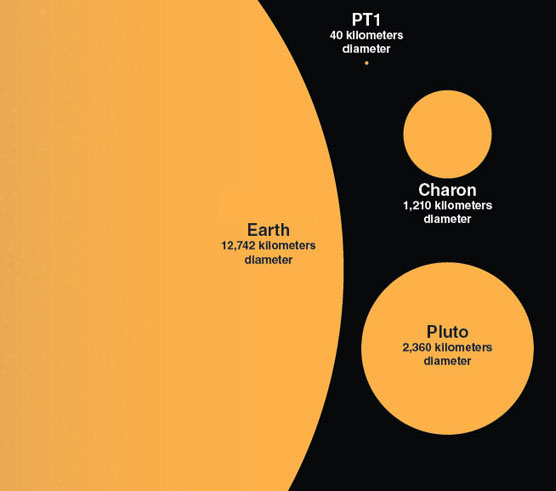
Illustration by Barbara Aulicino
Where will you be when humankind makes its farthest-ever landfall? What will you tell your children and grandchildren you learned about space because you were there with New Horizons, riding along virtually on television or the Internet? And what will you tell them you learned about ourselves, this wonderful species that seeks to know the universe from which it was born?
Click "American Scientist" to access home page
American Scientist Comments and Discussion
To discuss our articles or comment on them, please share them and tag American Scientist on social media platforms. Here are links to our profiles on Twitter, Facebook, and LinkedIn.
If we re-share your post, we will moderate comments/discussion following our comments policy.